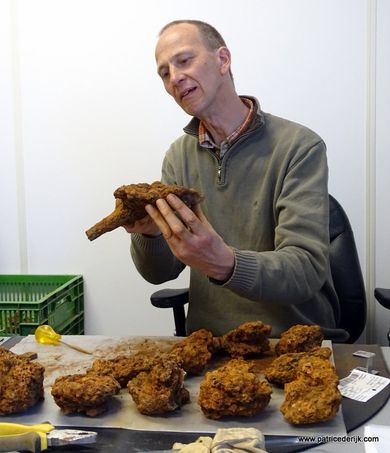Found some interesting rusty clumps of metal debris on your archaeological site? Not sure what they are or what they can contribute to your site narrative? After 25 years of working with iron slag from a wide-range of archaeological sites, Dr. Patrice de Rijk is able to extract much information on iron smelting and iron working from your finds. Dr. Patrice de Rijk is a certified senior KNA Specialist Materialen (33948748).
Iron slag is formed when iron ore is smelted in a furnace or when iron is worked in a forge. Both processes produce distinct forms of slag and thus point to the use of your archaeological site.
Further analysis of the slag will provide the archaeologists with a detailed picture of the working conditions on the site. What furnace-type was used, the quality of the iron used and the archaeological period they were formed in.
Dr. Patrice de Rijk offers three levels of metallurgical analysis of iron slag from archaeological excavations: Assessment, Brief Report and Full Analysis Report:
Iron slag is formed when iron ore is smelted in a furnace or when iron is worked in a forge. Both processes produce distinct forms of slag and thus point to the use of your archaeological site.
Further analysis of the slag will provide the archaeologists with a detailed picture of the working conditions on the site. What furnace-type was used, the quality of the iron used and the archaeological period they were formed in.
Dr. Patrice de Rijk offers three levels of metallurgical analysis of iron slag from archaeological excavations: Assessment, Brief Report and Full Analysis Report:

Assessment
Iron slag is analysed macroscopically (form, colour, intrusions, structure, weight, magnetism & density) and identified. Results are presented in table form with a short explanatory paragraph and recommendations for future research.Brief Report
Iron slag is analysed macroscopically and identified and results are presented in table form. Each slag type is described in detail and the analysis is tied-in, as far as possible, with the results of the archaeological excavation. This level of research suits small complexes well.
Full Analysis Report
Iron slag is analysed macroscopically and identified and results are presented in table form. Each slag type is described in detail. The analysis is tied-in extensively with the results of the archaeological excavation and parallels with iron slag material from other excavations are drawn.
